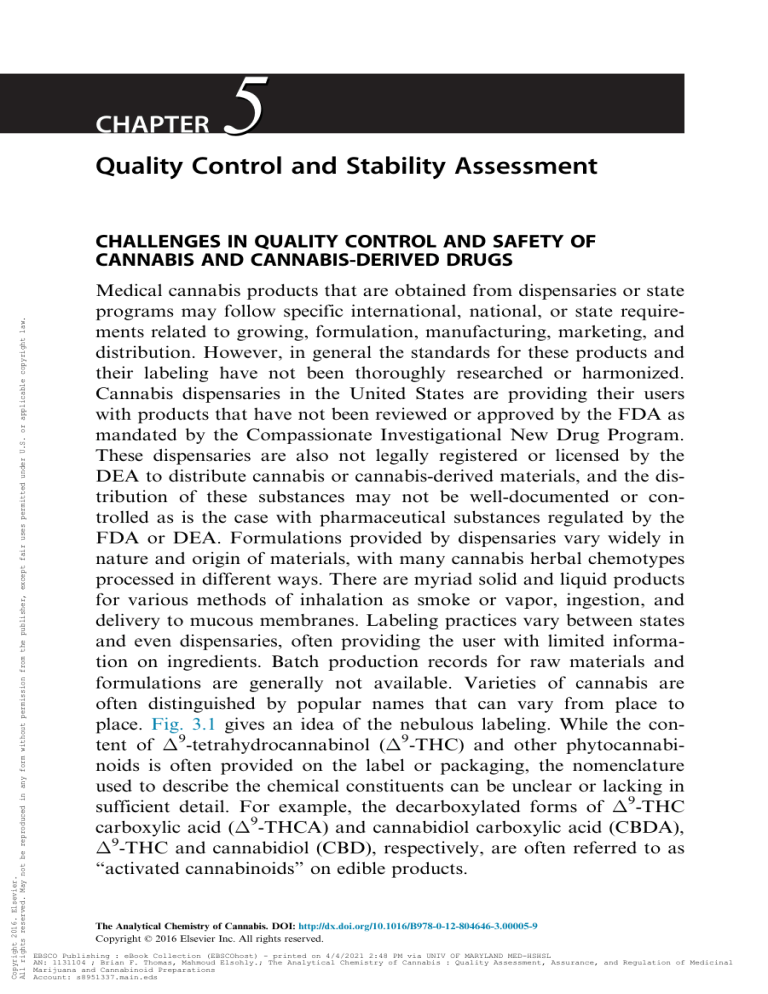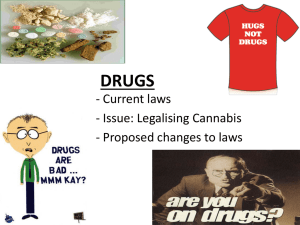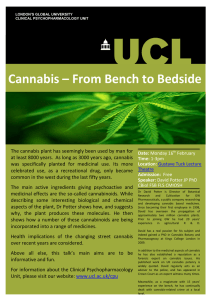
CHAPTER 5 Quality Control and Stability Assessment Copyright 2016. Elsevier. All rights reserved. May not be reproduced in any form without permission from the publisher, except fair uses permitted under U.S. or applicable copyright law. CHALLENGES IN QUALITY CONTROL AND SAFETY OF CANNABIS AND CANNABIS-DERIVED DRUGS Medical cannabis products that are obtained from dispensaries or state programs may follow specific international, national, or state requirements related to growing, formulation, manufacturing, marketing, and distribution. However, in general the standards for these products and their labeling have not been thoroughly researched or harmonized. Cannabis dispensaries in the United States are providing their users with products that have not been reviewed or approved by the FDA as mandated by the Compassionate Investigational New Drug Program. These dispensaries are also not legally registered or licensed by the DEA to distribute cannabis or cannabis-derived materials, and the distribution of these substances may not be well-documented or controlled as is the case with pharmaceutical substances regulated by the FDA or DEA. Formulations provided by dispensaries vary widely in nature and origin of materials, with many cannabis herbal chemotypes processed in different ways. There are myriad solid and liquid products for various methods of inhalation as smoke or vapor, ingestion, and delivery to mucous membranes. Labeling practices vary between states and even dispensaries, often providing the user with limited information on ingredients. Batch production records for raw materials and formulations are generally not available. Varieties of cannabis are often distinguished by popular names that can vary from place to place. Fig. 3.1 gives an idea of the nebulous labeling. While the content of Δ9-tetrahydrocannabinol (Δ9-THC) and other phytocannabinoids is often provided on the label or packaging, the nomenclature used to describe the chemical constituents can be unclear or lacking in sufficient detail. For example, the decarboxylated forms of Δ9-THC carboxylic acid (Δ9-THCA) and cannabidiol carboxylic acid (CBDA), Δ9-THC and cannabidiol (CBD), respectively, are often referred to as “activated cannabinoids” on edible products. The Analytical Chemistry of Cannabis. DOI: http://dx.doi.org/10.1016/B978-0-12-804646-3.00005-9 Copyright © 2016 Elsevier Inc. All rights reserved. EBSCO Publishing : eBook Collection (EBSCOhost) - printed on 4/4/2021 2:48 PM via UNIV OF MARYLAND MED-HSHSL AN: 1131104 ; Brian F. Thomas, Mahmoud Elsohly.; The Analytical Chemistry of Cannabis : Quality Assessment, Assurance, and Regulation of Medicinal Marijuana and Cannabinoid Preparations Account: s8951337.main.eds





